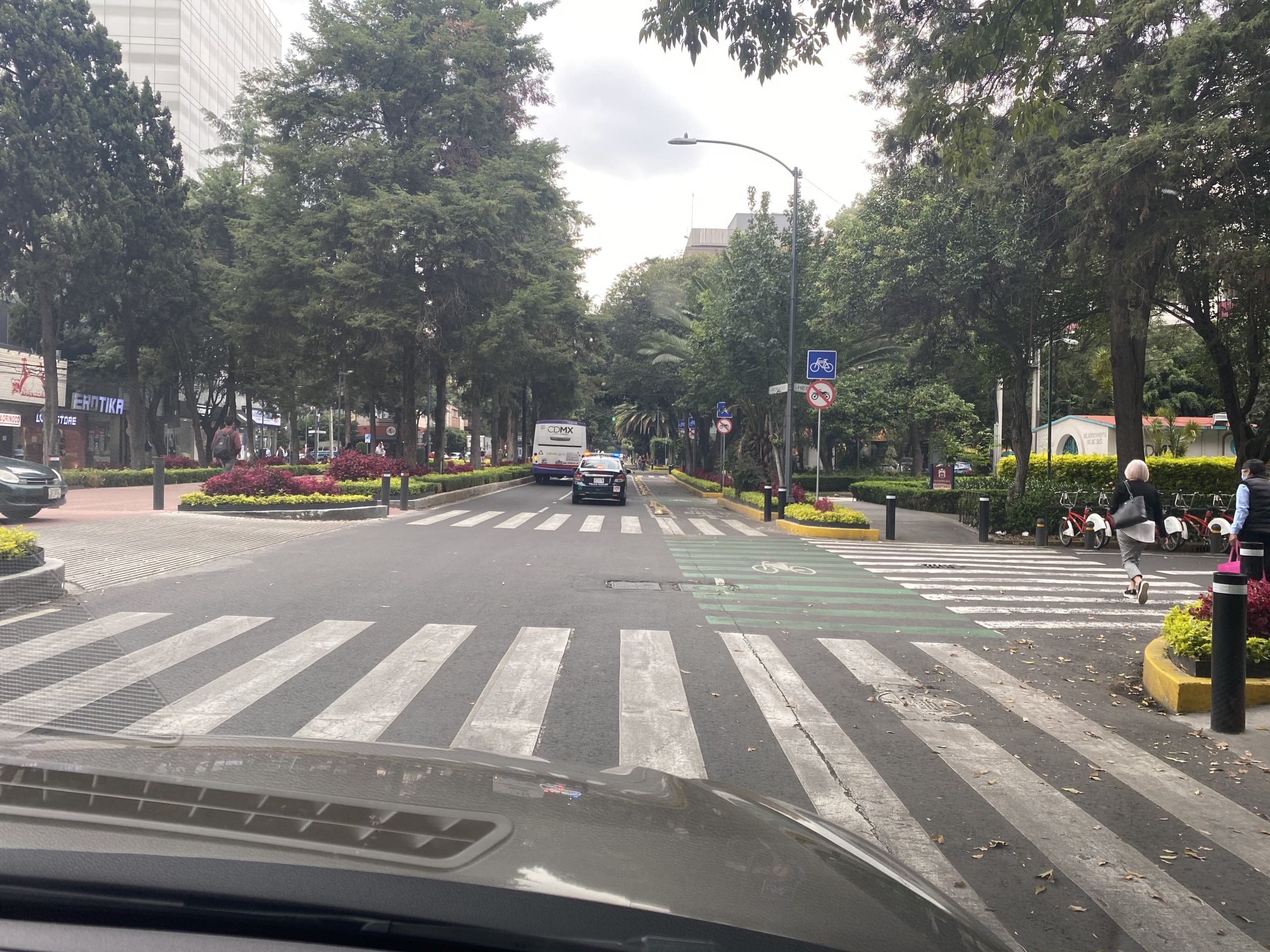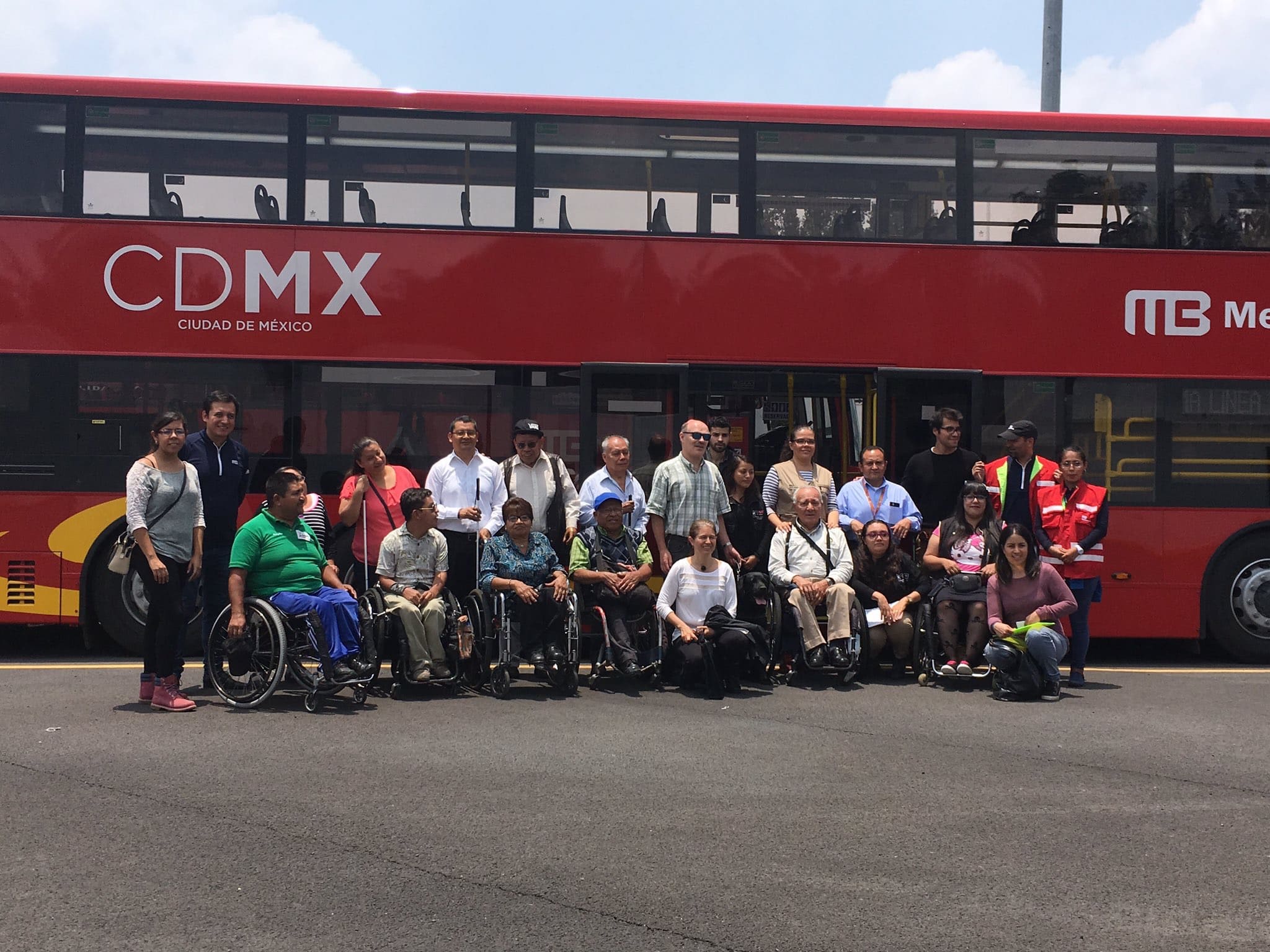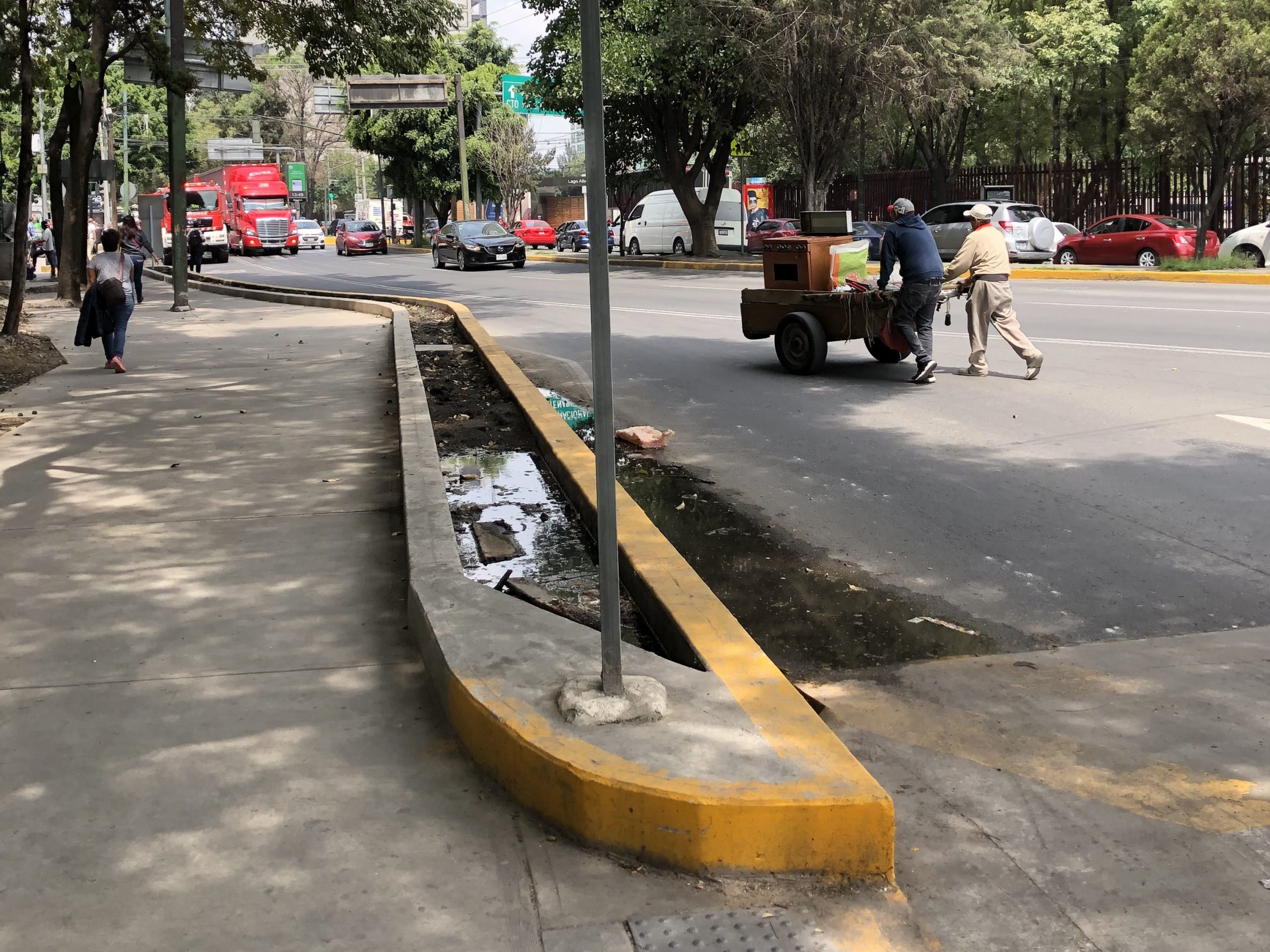
Interview with Janett Jiménez Santos
In the interview with architect Janett Jiménez Santos, she converses with us about the importance of Universal Access in design, in urban space and in landscaping.
Mexican Architect graduated from the National Autonomous University of Mexico, with postgraduate studies at the School of Architecture, Oxford Brookes University in the United Kingdom. She works as a consultant in accessibility for buildings, public spaces, and public transportation.
She advocates for the participation of groups, including people with disabilities, women, and cyclists, for standards, technical specifications, audits and technical consultations. Her approach is grounded in the principles of human rights, inclusion, usability, safety and sustainability. Internationally. She collaborates with various organizations and is a member of several committees.

Accessibility evaluation
Photography: Gurlano Tlepova
WHAT EXPERIENCE OR PERSON SPARKED YOUR INTEREST IN WORKING ON THE CONCEPT OF “UNIVERSAL ACCESS”?
Since I was a child I have been convinced that through design we can improve people’s quality of life. My first question was with the design of a mug and its meaning. Over time I realized that design is not limited to objects but to many areas, at different scales and in the interaction between systems.
A system is related to a larger one and an object can produce changes in “the whole”. For example, a handrail is a component of a ramp and this is a component of urban mobility, which is part of broader systems such as the sociocultural environment, the built environment, and the natural environment.
A family member acquired various types of disabilities, and I realize the importance of accessibility in order to enable development in different areas of their life. Stemmed from this, I sought from my architecture profession to improve the quality of people’s lives regardless of their disability, age, gender, ethnicity, social status or other factors. By using the concept of Universal Design we can adressed: accessibility, safety and inclusion. It is also a component that pomotes mental and social well-being.

Dialogue with Tom Rickert .
Photography: Andres Balcazar
WHY IS IT IMPORTANT FOR PROFESSIONALS IN THE FIELD OF ARCHITECTURE, LANDSCAPING AND URBAN PLANNING TO INCORPORATE INCLUSIVE DESIGN IN THEIR PROJECTS?
Social inclusion is one of the dimensions to achieve sustainable projects and is the foundation for achieving the development of the inhabitants and “leaving no one behind”. We professionals who dedicate ourselves to the design of spaces have a social responsibility that goes hand in hand with ethics; This implies being aware of the current human condition. The field of architecture, landscaping and urban planning involves providing responses to the diversity of human needs and interaction with their environment.
“The field of architecture, landscaping and urban planning involves providing responses to the diversity of human needs and interaction with their environment.”

Homero St. in Mexico City.
Photography: Janett Jiménez
The range of topics to consider when addressing current issues is continually growing, for example: inequality in travel, unsafe roads, or floods and heat waves caused by climate change, which have consequences on the health of the population.
7The design responses to these problems should not only align with the context of the site, independent of the size of the intervention (pedestrian crossing, street segment or polygon), but also on larger scales. Therefore, projects must seek to have impacts at the local, neighborhood, municipal, intermunicipal, metropolitan, state, regional, continental and global levels. Hence the importance of urban planning at different scales and achieving goals progressively.

Site visit with persons with disabilities.
Photography: Gobierno de la Ciudad de México
WHAT DESIGN TOOLS AND EQUIPMENT ARE NECESSARY FOR A LANDSCAPE PROJECT TO INTEGRATE STRATEGIES THAT SUCCESSFULLY ADDRESS DISABILITY, CLIMATE CHANGE AND ROAD SAFETY?
Landscape projects must be approached in a holistic way by combining different themes and achieving sustainable final results. There are three main topics that I consider relevant to take into account during the design: the principles of Universal Design, the Safe System approach to Road Safety and the Green Infrastructure network.
Below I present an example of the three themes applied in public spaces. The pedestrian surface of the sidewalk has no steps, including at the entrances to the property’s garages, and has a slight lateral inclination towards the strip of vegetation, where the water is directed towards a rain garden.
This prevents puddles of water on the circulation and the easy movement of wheelchair users and other pedestrians. This strip of vegetation becomes narrower as you approach the pedestrian crossing until you reach it.
The vegetation serves as a reference for persons with a visual impairment, not only to locate the crosswalk, but also to get comfortable before crossing. If there is a variation in color and size of vegetation adjacent to the crossing point, it helps the vehicle driver in spotting the adjacent to the pedestrian crossing point.

Vegetation strip for accessibility
Photography: Janett Jiménez
WHAT IS THE IMPORTANCE OF CONSIDERING “UNIVERSAL ACCESS” IN EXISTING URBAN SPACES?
The design goal for existing public space projects is to apply the seven principles of Universal Design. These are based on the needs of people with different disability conditions and facilitate the interaction of the general public, including those who apparently do not have any limitations. However, taking these principles into account is not only designed for all people (to the greatest extent possible) but also for our future, since skills are lost due to age.
Particularly in existing urban spaces, it is important that during the design process participatory processes are integrated with stakeholders, including the community with different types of disabilities and ages, so that they contribute with their perspectives or visions in relation to the intervention of that space.
The social benefits of considering “Universal Access” are several, for example: it promotes equal opportunities; promotes greater independence in mobility; generates more livable environments; favors coexistence between diversity of people; improves public, personal and road safety conditions; and promotes less stressful and health-friendly environments. There are also economic and environmental benefits, such as favoring local economies and promoting walkability with safe infrastructure.

Working meeting.
Photography: Jennifer Miranda
“Universal Access generates more livable environments, promotes greater mobility independence, and facilitates equal opportunities.”
¿HOW DO REGULATIONS AND STANDARDS ADVOCATE FOR THE RIGHT OF ALL INDIVIDUALS TO FREELY NAVIGATE SPACES?
There are different levels of regulations in Mexico: from international treaties or conventions -those signed by the Government of Mexico are within the Mexican constitutional range- to regulations below the Constitution with different levels and scope. The current Constitution addresses the right to mobility with: road safety, accessibility, efficiency, sustainability, quality, inclusion and equality, this allows movement free of obstacles.
Although some standards refer to the concept of Accessible Route, which refers to continuous pedestrian circulation without obstacles through a combination of elements, we still require that the concept of Accessibility Chain be established between different areas: buildings, public space, transportation, information and communications, seeking to create mobility systems. Also consider the Accessible Route for different needs.
For example, for people who use wheeled devices (persons who use wheelchairs, walkers with wheels or strollers), persons with limited mobility (those who walk unbalanced, users of crutches, canes or assistance dogs), persons who use sight and cognition for their movement (people with hearing, language, intellectual or mental disabilities) and those who do not see who move through their other senses.

Pedestrian crossing view.
Photography: Freepik











